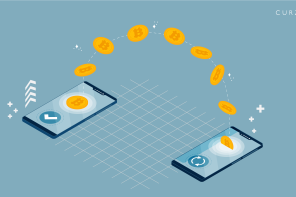
Tuesday August 2, 2022
Public Relations in the Age of Digital Disruption
Many years ago, no one would have imagined the possibility of paying for an item in a shopping mall with a wristwatch, or a mobile phone. Who would have thought that we would be able to access medical care using an app or even go shopping in the Metaverse and have it delivered to our doorstep?
Welcome to the age of Digital Disruption!
One of the most overused phrases in today’s business world is “Digital disruption” – the age where digital is shaking up virtually every industry, thanks to an increase in computing power, technology adoption and information sharing. From the retail industry to the transport industry and even the fashion industry, digital disruption is challenging the status quo.
In the consumer industry, for instance, two powerful forces are transforming the nature of consumption. The empowered consumer and disruptive technologies have sent companies scampering for new strategies and business methods in creating consumer connection. Today’s consumers are more connected and empowered to make decisions. They demand experiences rather than just products and are active participants at every stage of the value chain, acting as innovators, marketers, curators, and influencers.
Similarly, in order to stay competitive, relevant and meet the dynamic market demands, the PR industry has also had to restrategize its business models to be able to add value to clients’ ROI, by taking advantage of more news channels, more communications tools and more viewer interaction.
Redefining Public relations
Disruption has changed business models and the way people think, feel and behave. It requires people to adapt to new ways of communication. Disruption leads to the emergence of new ideas and expectations and requires PR professionals to be creative and innovative. It also requires businesses to keep up-to-date and stay ahead of current trends, and be competitive and attractive to their audiences. The PR firms that thrive today have done so by adopting a blend of traditional PR and Digital PR in delivering services.
Technology, gadgets, automation of processes, social media, or innovations in terms of products and services now affect the stages of planning, executing, and managing a communication strategy. Communication processes are integrated; campaigns are integrated, mixing different communication tactics. Today, campaigns blend digital and non-digital tactics allowing them to reach target audiences in the best way possible at the right time with the right content.
While traditional practices still play a major role in strategic campaigns and branding strategies, digital disruption has brought with it new distribution methods and measurement tools that allow PR professionals to track campaign results in real-time. Today, with social listening tools like Meltwater, the process is even easier because it channels data into a single dashboard to provide a clearer understanding of overall social engagement.
Google Analytics also enables practitioners to track campaigns successfully. With a simple block of code, one can measure onsite traffic, track traffic sources, time on site, the bounce rate, user demographics, conversations and more. It also offers real-time reporting.
Traditional public relations (PR) skills, such as compelling writing and media relations, remain at the heart of PR. But due to digital disruption, additional skills like social media content creation, content analytics, SEO, and programming, have broadened the spectrum of skills required of today’s PR practitioners. These skills must complement traditional skills in order to create and analyse PR in a hyper-digital world
Curzon PR is a London-based PR firm working with clients globally. If you have any questions, please feel free to contact our Business Development Team bd@curzonpr.com






Follow us